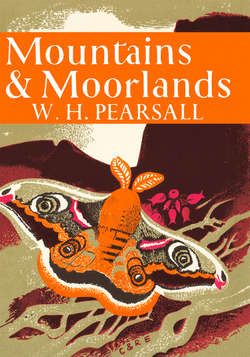Читать книгу Mountains and Moorlands - W. Pearsall H. - Страница 5
EDITORS’ PREFACE
ОглавлениеTHERE are really two Britains—two different countries, their boundary a line that strikes diagonally across England from Yorkshire to Devon. To the north and west of this line is the region of mountains and old rocks; to its south and east the newer, fertile land of the plains. These regions differ vastly in their climate, rocks, soils, scenery, plants, animals—and men.
It is of the mountains and moorlands that W. H. Pearsall writes. Moorland, mountain-top and upland grazing occupy over a third of the total living-space of the British Isles, and, of all kinds of land, have suffered least interference by man. Mountains and moorlands provide the widest scope for studying natural wild life on land.
In the present volume Professor Pearsall has brought together the results of over thirty years’ work among the high hills, the lakes and the moorlands of northern and western Britain. He is a botanist, but these pages show that animals have appealed to him almost as much as plants, a double interest that is rarer than it should be among naturalists. It is doubtful whether any other author could, single-handed, have presented such a well-balanced picture of the wild life of an area as Professor Pearsall has done in this volume.
Although he is now banished to the gently undulating south (he is head of the Botany Department at University College, London) the whole of Professor Pearsall’s previous working life has been spent within call of the mountains and moorlands about which he writes—at Manchester, at Leeds, and finally as Professor of Botany at Sheffield University. During this period he has made many outstanding contributions to ecological research, especially in the Lake District, but it is obvious from his book that the severely scientific discipline that these researches demand has by no means extinguished his deep love of the countryside in which they were carried out. On the contrary, the aesthetic and the scientific approaches have reinforced each other, as they should—but frequently do not—in any fully developed naturalist.
For many people, perhaps the most arresting point in the book will be the idea that since the end of the Ice Age our mountains and moorlands have been subject to a process of inevitable change, one of the trends being towards the growth of bog and peat-moss at the expense of grassland and woodland, and towards a general impoverishment of soils; further, that during the last 3,000 years or so this and other changes have been progressively accentuated by man’s interference, so that the difference between the natural history of our moorlands to-day and a bare two centuries ago is very marked. Indeed, work such as Professor Pearsall’s is putting the history of our country in a new light. His chapter on the future possibilities of our uplands is equally striking.
Before the growth of modern transport most people in the south of England had little chance of knowing how those in the rest of Britain lived; there was little opportunity for studying and appreciating the lives of those who lived in the unspoilt countryside of the north and west. But to-day the mountains and moorlands of Highland Britain are within reach of every one, and we hope that Professor Pearsall’s book will help to quicken—and guide—interest in those parts of this country which now provide the main (almost the only remaining) opportunity for observing and investigating wild life and human problems in Britain as it was before modern man’s heavy hand was laid upon it.
THE EDITORS
